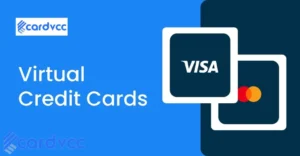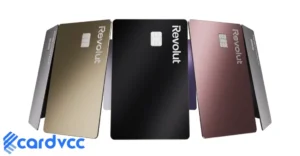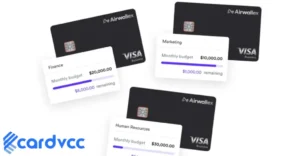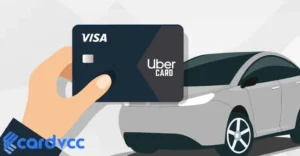Blocking charges on a debit card is crucial for protecting your money. It can prevent unauthorized transactions and keep your finances safe.
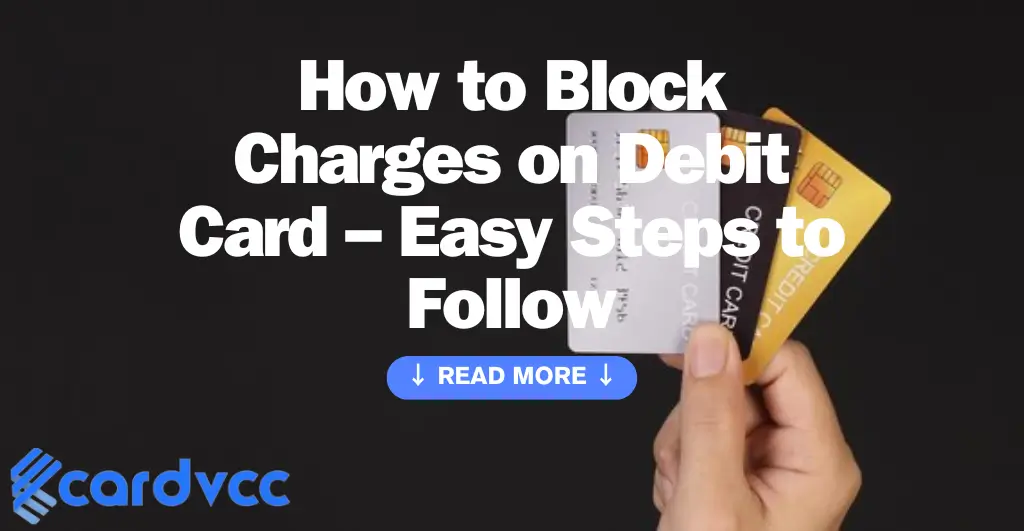
Debit cards are convenient, but they come with risks. Unauthorized charges can happen if your card is lost or stolen. Knowing how to block these charges is essential for everyone. This guide will explain simple steps to protect your card.
We’ll cover how to contact your bank, use mobile apps, and take preventive measures. These tips will help you act quickly and confidently. By the end, you’ll know exactly what to do to keep your money secure. Let’s get started on making your debit card safer.
Reasons To Block Charges
Blocking charges on your debit card is an essential step in managing your finances. It helps protect your money from fraud and unauthorized transactions. Below, we explore the main reasons why you should consider blocking charges on your debit card.
Fraud Prevention
Fraud is a significant concern for debit card users. Cybercriminals are always looking for ways to steal your money. Blocking charges can act as a barrier against such attempts. By doing so, you minimize the risk of unauthorized access to your funds.
Blocking charges also helps in identifying suspicious activities early. Banks and financial institutions offer alerts for any unusual transactions. You can respond quickly and block your card to prevent further losses.
Unauthorized Transactions
Unauthorized transactions are another reason to block charges on your debit card. These can happen due to lost or stolen cards. Someone may use your card details without your permission.
Blocking charges immediately can prevent further unauthorized use. This action ensures that your money remains safe until you can report the issue to your bank. Additionally, it provides peace of mind knowing that your funds are protected.
To summarize, blocking charges on your debit card is crucial for fraud prevention and avoiding unauthorized transactions. It helps you safeguard your hard-earned money effectively.
Contacting Your Bank
Blocking charges on your debit card may seem challenging. However, contacting your bank can make this process simple and quick. Here, we explain the easiest ways to reach out to your bank for help.
Customer Service Hotline
One of the fastest ways to block charges on your debit card is by calling your bank’s customer service hotline. Most banks have 24/7 hotlines to handle urgent requests. Follow these steps:
- Find the customer service number on your bank’s website or the back of your debit card.
- Call the number and choose the option to speak with a representative.
- Explain that you want to block charges on your debit card.
- Verify your identity by answering some security questions.
- Confirm the changes with the representative.
Using the customer service hotline is effective for immediate action. It ensures that your request is processed quickly.
Visit A Branch
If you prefer face-to-face interaction, you can visit a branch of your bank. This method is especially helpful if you need detailed assistance. Follow these steps:
- Find the nearest branch using your bank’s website or app.
- Bring a valid ID and your debit card to the branch.
- Speak with a customer service representative.
- Explain that you want to block charges on your debit card.
- Provide any required information for identity verification.
- Confirm the changes with the representative.
Visiting a branch allows you to ask questions and get personalized help. It’s a great option if you have other banking needs too.
Using Online Banking
Blocking charges on a debit card is crucial for managing finances. Using online banking makes this process simple and efficient. This guide will help you block charges on your debit card using online banking.
Account Settings
First, log into your online banking account. Go to the Account Settings section. Here, you can control various aspects of your debit card. Look for the option to block or limit charges.
Follow these steps:
- Navigate to the debit card settings.
- Select block charges.
- Confirm your selection.
In many cases, you can also set spending limits. This helps prevent unauthorized transactions. Regularly check your account settings to ensure everything is up to date.
Transaction Alerts
Another useful tool is transaction alerts. These alerts notify you about any activity on your debit card. You can set these alerts in the online banking portal.
Steps to set up transaction alerts:
- Go to the notifications or alerts section.
- Select transaction alerts.
- Choose the types of transactions you want to be alerted about.
These alerts can be sent via email or SMS. They help you keep track of your spending. If you notice any suspicious activity, you can take action immediately.
Using online banking tools like account settings and transaction alerts ensures your debit card is secure. It also provides peace of mind knowing you have control over your finances.
Mobile Banking Apps
Mobile banking apps offer a convenient way to manage your finances. You can perform various tasks from your smartphone, including blocking charges on your debit card. These apps come with multiple features designed to give you control over your banking activities.
App Features
Mobile banking apps come packed with features to make managing your account easy. Some of the key features include:
- Account overview: View your balance and recent transactions.
- Transaction history: Check past transactions and filter by date.
- Card controls: Block and unblock your debit card with a tap.
- Alerts and notifications: Get real-time updates on your account activity.
These features help you monitor your spending and control your debit card usage. Blocking charges is quick and straightforward with these tools.
Security Options
Security is a top priority for mobile banking apps. They offer various options to keep your account safe:
- Two-factor authentication: Adds an extra layer of security.
- Biometric login: Use your fingerprint or face recognition to log in.
- PIN protection: Set a unique PIN for app access.
- Instant card blocking: Block your card immediately if lost or stolen.
These security features ensure that you can block charges on your debit card securely. They protect your account from unauthorized access and potential fraud.
Mobile banking apps make it easy to manage your finances and block charges on your debit card. With robust features and strong security options, they provide a reliable solution for your banking needs.

Third-party Services
Blocking charges on your debit card might seem difficult. But, third-party services can help. These services provide extra layers of security. Let’s explore some key third-party services.
Digital Wallets
Digital wallets offer a convenient way to manage your money. They keep your card details secure. Examples include PayPal, Apple Pay, and Google Wallet. When you use a digital wallet, your card details are not shared with the merchant. This reduces the risk of unauthorized charges.
To block charges using digital wallets, follow these steps:
- Open your digital wallet app.
- Go to settings or payment methods.
- Select your debit card.
- Choose the option to block or disable the card.
This simple process helps you control who can charge your card. It also adds a layer of security.
Payment Gateways
Payment gateways process online transactions. They act as a bridge between the customer and the merchant. Some popular payment gateways are Stripe, PayPal, and Square. Using a payment gateway can reduce the risk of fraud. It ensures your card details are not exposed.
To block charges through payment gateways:
- Log into your payment gateway account.
- Navigate to the payment methods section.
- Select your debit card.
- Find the option to block or restrict charges.
Table: Payment Gateway FeaturesPayment GatewayFeatureBenefitPayPalBuyer ProtectionSecure TransactionsStripeFraud PreventionSafe PaymentsSquareData EncryptionPrivacy
Understanding these third-party services can save you from unwanted charges. They provide simple and effective tools to protect your money.
Temporary Card Blocks
Temporary card blocks provide a secure way to manage your debit card usage. They allow you to temporarily disable your card. This can help prevent unauthorized charges or control spending. It’s a useful option for those who need a short-term solution.
Short-term Solutions
Short-term solutions offer a quick and easy way to block your debit card. You can use these options if you misplaced your card or need a break from spending. Many banks offer this feature through their mobile apps or online banking portals.
To temporarily block your card, follow these steps:
- Log in to your bank’s mobile app or website.
- Navigate to the debit card section.
- Select the option to temporarily block your card.
- Confirm your choice.
This process is simple and helps you quickly secure your funds.
Reactivation Process
Reactivating your card is just as easy as blocking it. Once you feel confident to use your card again, you can unblock it. Most banks make this process straightforward.
Follow these steps to reactivate your card:
- Log in to your bank’s mobile app or website.
- Go to the debit card section.
- Select the option to unblock your card.
- Confirm your choice.
Your card will be active again, and you can resume normal use.
Temporary card blocks provide peace of mind. They are a quick fix for managing your debit card. This feature helps you stay in control of your finances.
Permanent Card Deactivation
Permanent card deactivation is a secure method to stop all charges on a debit card. This process ensures your funds are safe from unauthorized access. It’s a vital step if you suspect fraud or have lost your card.
Replacement Procedures
Once you deactivate your card, you’ll need a replacement. Contact your bank immediately. They will guide you through the steps.
Most banks offer two options for replacement:
- In-person request: Visit your bank branch. Fill out the necessary forms.
- Online request: Use the bank’s website or mobile app. Submit your request digitally.
After submitting your request, the bank will process it. You can expect a new card within 7-10 business days. Some banks offer expedited shipping for an additional fee.
Impact On Account
Deactivating your card does not affect your bank account. Your funds remain safe and accessible. However, you cannot use your old card for transactions.
Here are some impacts to consider:
- Temporary inconvenience: You might need to use cash or checks until your new card arrives.
- Recurring payments: Update your payment information for any subscriptions or bills linked to the old card.
Permanent card deactivation is a secure way to protect your finances. Follow the replacement procedures to get your new card quickly.
Preventative Measures
Blocking unwanted charges on your debit card can save you a lot of trouble. Taking some preventative measures will help you avoid unauthorized transactions. This section will cover essential steps you can take to protect your finances.
Regular Monitoring
Regularly checking your bank statements is crucial. This helps you spot any unusual transactions early. You can do this through your bank’s app or website.
- Daily Checks: Make it a habit to review your transactions daily.
- Alerts: Set up alerts for any transactions over a certain amount.
- Monthly Statements: Go through your monthly bank statements thoroughly.
Security Best Practices
Following security best practices will help you block unauthorized charges. These steps will make your debit card more secure.
- Use Strong Passwords: Always use complex passwords for your online banking accounts.
- Enable Two-Factor Authentication: This adds an extra layer of security.
- Avoid Public Wi-Fi: Never access your bank account on public Wi-Fi networks.
- Secure Your Devices: Keep your smartphone and computer secure with antivirus software.
Taking these preventative measures seriously can help you safeguard your debit card against unauthorized charges. Regular monitoring and following security best practices are key to keeping your money safe.

Frequently Asked Questions
How Can I Block Charges On My Debit Card?
You can block charges by contacting your bank’s customer service. They can place a hold on your card. You can also use your bank’s mobile app to block transactions.
Can I Block A Specific Merchant?
Yes, many banks allow you to block transactions from specific merchants. Check your bank’s mobile app or website for this feature. Contact customer service for assistance if needed.
Is There A Fee To Block Charges?
Most banks do not charge a fee to block charges. However, it’s best to check with your specific bank. Some banks may have different policies.
How Long Does It Take To Block Charges?
Blocking charges can be immediate when done through a mobile app. If done through customer service, it might take a few minutes. Always confirm with your bank.
Conclusion
Blocking charges on your debit card is essential for financial safety. Follow the steps outlined to protect your account. Always keep an eye on your transactions. Contact your bank immediately if you notice any suspicious activity. Being proactive helps prevent unwanted charges.

